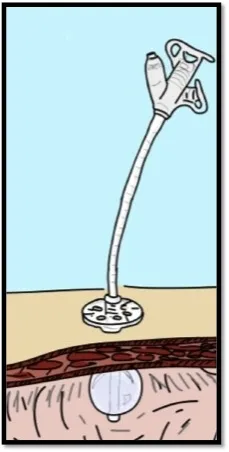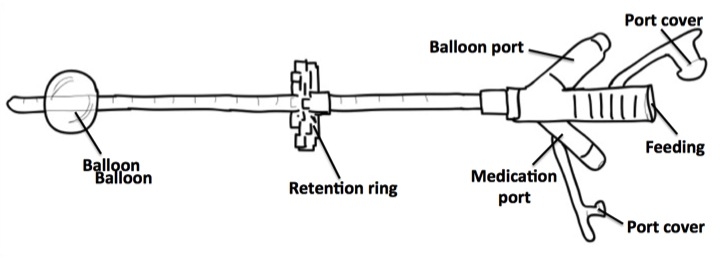Only replace your child’s MIC-G™ g-tube if you have been taught how to do so by your child’s doctor or nurse.
If your child’s MIC-G™ g-tube falls out and you have not been taught how to replace it, put the g-tube back in the stoma and cover the site with gauze to soak up drainage. Tape the gauze in place and call your doctor or nurse at Boston Children’s Hospital right away.
At left: Figure 1.



